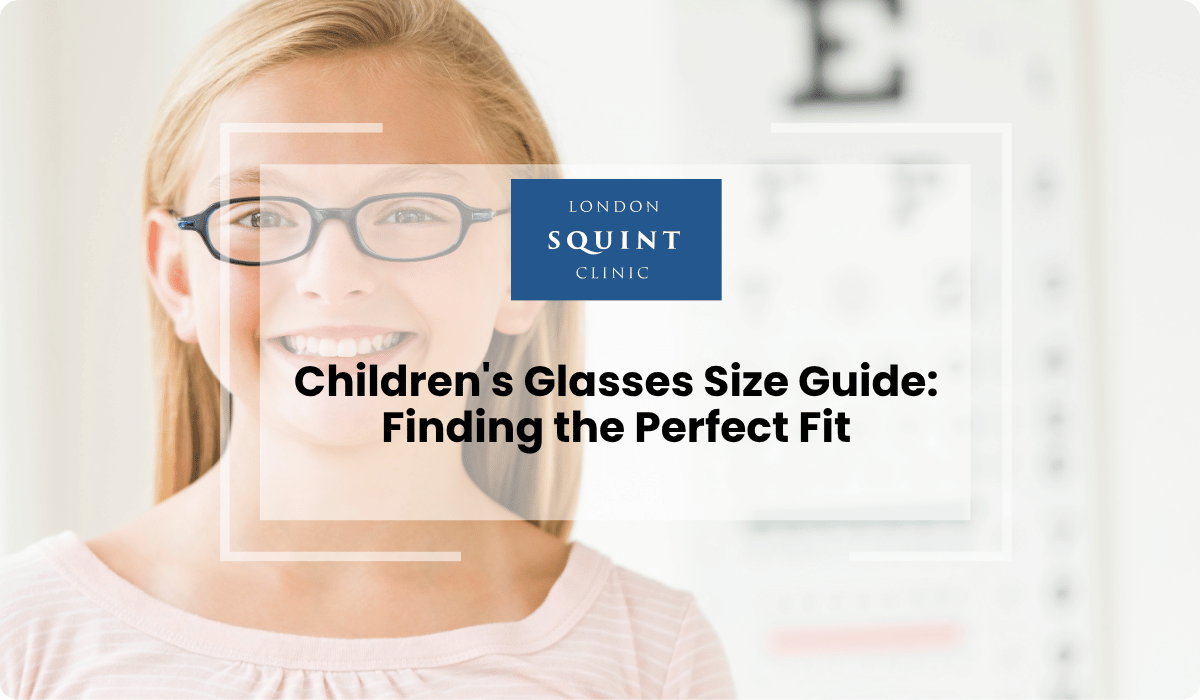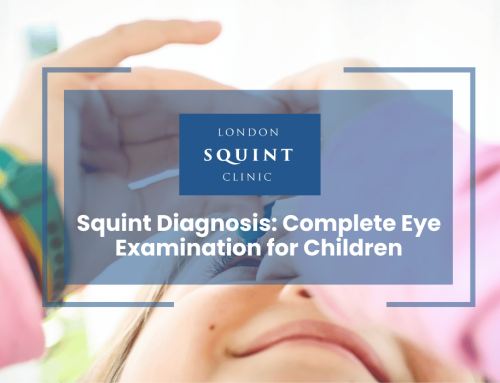Children’s Glasses Size Guide: Finding the Perfect Fit
Essential Tips for Perfect-Fitting Children’s Glasses
- Understand the five critical measurements for children’s glasses: lens width, bridge width, temple length, frame width, and lens height
- Consider age-specific sizing needs, from flexible frames with wraparound temples for toddlers to more sophisticated options for teens
- Look for key comfort features like spring hinges, appropriate bridge designs, and lightweight materials
- Address common fitting issues promptly—sliding glasses often need nose pad adjustments, while red marks indicate pressure points requiring attention
- Perform weekly home maintenance checks and tighten loose screws to maintain proper fit
- Schedule professional adjustments every 3-4 months for younger children and after growth spurts
- Remember that properly fitted glasses are essential for effective treatment of conditions like amblyopia and strabismus
Table of Contents
- Understanding Children’s Glasses Measurements: The Basics
- How to Measure Your Child for the Right Eyewear Fit
- Age-Appropriate Sizing: From Toddlers to Teens
- Key Frame Features That Ensure Comfortable Glasses
- Common Fitting Problems and Simple Solutions
- Adjusting and Maintaining Proper Fit as Children Grow
- When to Schedule Professional Fitting Adjustments
Understanding Children’s Glasses Measurements: The Basics
Finding the perfect fit for children’s glasses involves understanding several key measurements that ensure comfort, functionality, and proper vision correction. Unlike adult frames, children’s glasses require special attention to sizing as ill-fitting frames can impact both vision development and compliance with wearing them.
The fundamental measurements for children’s eyewear include:
- Lens width: The horizontal width of each lens, typically measured in millimetres
- Bridge width: The distance between lenses that sits on the nose
- Temple length: The length of the arms that extend from the frame to behind the ears
- Frame width: The total horizontal width of the frame
- Lens height: The vertical measurement of each lens
These measurements are often displayed on the inside of the temple arm as three numbers (e.g., 46-16-125), representing lens width, bridge width, and temple length respectively. Understanding these dimensions is crucial for paediatric eyewear fitting, as children’s facial proportions differ significantly from adults and vary considerably across age groups.
Proper fitting glasses support optimal visual development during critical growth periods. For children with conditions like amblyopia or strabismus, correctly fitted glasses are even more essential as they form a crucial part of the treatment plan.
How to Measure Your Child for the Right Eyewear Fit
Obtaining accurate measurements for your child’s glasses ensures optimal vision correction and comfort. While professional fitting is ideal, understanding how measurements are taken can help you assess fit between appointments.
Basic Measurement Techniques:
- Face width measurement: Measure the distance between the temples (the widest part of the face). The frame width should be slightly wider than this measurement to avoid pressure on the sides.
- Bridge measurement: Observe the top of your child’s nose where glasses would rest. Children typically have flatter, less developed bridges, requiring frames with adjustable nose pads or specially designed bridges.
- Temple length assessment: Measure from the hinge of the frame to the point where the temple would bend around the ear. This should allow the frame to sit comfortably without pressing into the sides of the head.
- Pupillary distance (PD): The distance between the centres of the pupils. This measurement is crucial for proper lens centration and is best measured by an optician.
For young children who may not sit still for precise measurements, opticians use specialised techniques and reference points. They consider factors like the distance between the eyes, cheekbone position, and ear placement to determine the most appropriate frame dimensions.
When selecting frames, remember that measurements are guidelines rather than rigid rules. The comfort and stability of the glasses on your child’s face are equally important considerations. A frame that meets all the numerical specifications but feels uncomfortable won’t be worn consistently, undermining the effectiveness of vision correction.
Age-Appropriate Sizing: From Toddlers to Teens
Children’s facial structures evolve significantly as they grow, necessitating different eyewear considerations at each developmental stage. Understanding age-appropriate sizing helps ensure optimal fit and comfort throughout childhood.
Toddlers (1-3 years): The smallest frames are designed for toddlers, with typical measurements around 40-42mm lens width, 14-16mm bridge width, and 115-125mm temple length. Key features include:
- Flexible, nearly indestructible materials
- Wraparound temples or headband attachments for stability
- Very lightweight construction
- Minimal or no nose pads as toddlers have virtually no bridge
Preschoolers (3-5 years): As children enter preschool, slightly larger frames become appropriate, typically 42-45mm lens width, 15-16mm bridge width, and 120-130mm temple length. These frames often feature:
- Spring hinges to withstand rough handling
- Rounded edges for safety
- Adjustable nose pads as bridges begin to develop
School-age children (6-9 years): During primary school years, frames typically measure 45-48mm lens width, 16-18mm bridge width, and 125-135mm temple length. Features include:
- More varied style options
- Durable but lightweight materials
- Adjustable components to accommodate growth
Pre-teens and teens (10-16 years): Older children may transition to adult small frames or specialised teen frames, measuring 48-54mm lens width, 16-20mm bridge width, and 130-145mm temple length. These frames offer:
- Fashion-forward designs
- Adult-like features with youth-appropriate sizing
- More sophisticated materials and colour options
Remember that these age ranges are guidelines rather than strict rules. Some children develop faster or slower than average, making individual assessment essential for proper choosing the right glasses for your child.
Key Frame Features That Ensure Comfortable Glasses
Beyond basic measurements, specific frame features significantly impact how comfortably and securely glasses fit on a child’s face. Understanding these elements helps parents make informed choices when selecting eyewear for their children.
Spring Hinges: Perhaps the most important feature for children’s glasses, spring hinges allow temples to flex outward without breaking when pulled or handled roughly. This flexibility accommodates active play while maintaining proper alignment when worn correctly.
Bridge Design: Children’s underdeveloped nasal bridges require specialised designs:
- Saddle bridges: Sit directly on the face without nose pads, distributing weight across a wider area
- Adjustable nose pads: Allow customisation for growing noses and provide better stability
- Keyhole bridges: Designed to fit flatter nose profiles without sliding
Temple Style: The arms of glasses come in various configurations for children:
- Wraparound temples: Curve significantly behind the ears for maximum stability
- Cable temples: Feature a curved end that hooks around the ear
- Straight temples: Better for older children with more developed features
Frame Materials: The composition of frames affects both comfort and durability:
- Flexible materials: Memory titanium, TR-90, and certain plastics can bend without breaking
- Hypoallergenic options: Important for children with sensitive skin
- Lightweight materials: Reduce pressure on developing facial structures
Lens Thickness and Weight: Even with perfect frame dimensions, heavy lenses can cause discomfort. High-index lenses are thinner and lighter, making them ideal for children with stronger prescriptions.
These features work together to create a comfortable wearing experience, encouraging children to keep their glasses on—essential for effective treatment of conditions like amblyopia and accommodative strabismus.
Common Fitting Problems and Simple Solutions
Even with careful measurement and selection, children’s glasses may present fitting challenges. Recognising common problems and knowing how to address them helps maintain proper fit between professional adjustments.
Glasses Sliding Down: Perhaps the most frequent complaint, this issue can interfere with vision correction.
- Causes: Bridge too wide, temples too loose, or frame too heavy
- Solutions: Adjust nose pads inward, tighten temple screws, add ear hooks or sports straps, or consider frames with cable temples
Pressure on Temples or Behind Ears: This discomfort often leads children to remove their glasses.
- Causes: Temples too tight or too short, improper bend in temple ends
- Solutions: Gently adjust temple arms outward, ensure proper curvature behind ears, or select frames with spring hinges
Frames Sitting Asymmetrically: Uneven positioning affects both vision and comfort.
- Causes: Facial asymmetry (normal in children), bent frames, or uneven nose pads
- Solutions: Adjust nose pads individually, realign frame front, or seek professional adjustment
Red Marks on Nose or Behind Ears: These indicate pressure points that need addressing.
- Causes: Frames too tight, sharp edges, or allergic reactions to frame materials
- Solutions: Loosen appropriate components, check for rough spots, or consider hypoallergenic materials
Lenses Too Close to Eyes or Eyelashes: This can cause discomfort and smudging.
- Causes: Frame too small, improper pantoscopic tilt, or bridge sitting too low
- Solutions: Adjust frame angle, select frames with appropriate lens depth, or reposition nose pads
For children with specific facial features or medical conditions like Down syndrome, standard frames may present additional challenges. Specialised frames with customisable features are available and should be considered when standard adjustments prove insufficient.
Adjusting and Maintaining Proper Fit as Children Grow
Children grow rapidly, and their glasses need regular adjustments to maintain optimal fit and function. Understanding how to perform basic maintenance and recognising when professional intervention is needed helps ensure continuous proper fit between eye appointments.
Regular Home Maintenance:
- Weekly checks: Examine frames for alignment, loose screws, and proper positioning
- Gentle cleaning: Use lukewarm water and mild soap to remove oils and debris that can affect fit
- Screw tightening: Keep a small eyeglass repair kit at home for minor tightening of loose screws
- Temple alignment: Ensure both temple arms maintain equal pressure and alignment
Safe Minor Adjustments: Some adjustments can be performed at home with care:
- Temple bending: Gently adjust the curve behind the ears by applying even pressure with both hands
- Nose pad positioning: Carefully move adjustable nose pads inward or outward to improve stability
- Frame straightening: If slightly crooked, apply gentle pressure to realign the frame front
Growth Indicators: Watch for these signs that your child has outgrown their current frames:
- Temples extending straight back rather than curving around ears
- Red marks or indentations on the sides of the head
- Frame sitting higher on the face than originally fitted
- Child frequently pushing glasses up or complaining of discomfort
- Visible gap between the bridge and the nose
Transitional Solutions: Between replacements, consider these temporary measures:
- Adjustable straps to secure glasses that have become too loose
- Silicone ear grips to improve stability of frames that are slightly too large
- Replacement nose pads in different sizes to accommodate growth
Remember that proper fit directly impacts the effectiveness of vision correction, particularly for children with conditions like amblyopia or accommodative strabismus. Regular monitoring ensures that glasses continue to serve their therapeutic purpose as your child grows.
When to Schedule Professional Fitting Adjustments
While minor adjustments can be made at home, professional fitting services are essential for maintaining optimal eyewear performance. Understanding when to seek expert help ensures your child’s glasses provide proper vision correction and comfort throughout their use.
Recommended Professional Adjustment Schedule:
- Initial fitting: Always have new glasses professionally fitted, even if purchased online
- Follow-up adjustment: Schedule a check 1-2 weeks after receiving new glasses to address any issues that emerge with regular wear
- Routine maintenance: Visit an optician every 3-4 months for children under 8, and every 4-6 months for older children
- Growth-related visits: Schedule additional adjustments during growth spurts, typically around ages 3-5 and 8-12
- Post-impact check: After any significant impact or fall involving the glasses
Signs Professional Adjustment Is Needed:
- Persistent red marks or indentations on the nose or behind ears
- Child complaining of headaches or eye strain when wearing glasses
- Glasses consistently sliding down despite home adjustments
- Visible asymmetry in how the frames sit on the face
- Loose or wobbly frames that cannot be stabilised with home maintenance
- Child removing glasses frequently due to discomfort
- Noticeable changes in how the child holds their head when wearing glasses
What to Expect During Professional Adjustments:
Frequently Asked Questions
How do I know if my child’s glasses fit properly?
Properly fitted glasses should sit comfortably on your child’s nose without sliding down, maintain even pressure on both sides of the head, and have temples that curve gently around the ears. The eyes should be centered in the lenses, and the frames should not touch the cheeks or eyebrows. There should be no red marks on the nose or behind the ears after wearing, and your child should be able to move their head normally without the glasses shifting position.
How often should children’s glasses be replaced?
Children typically need new glasses every 12-18 months due to prescription changes and facial growth. However, active children or those experiencing rapid growth spurts may need replacements more frequently, sometimes every 6-12 months. Always replace frames immediately if they become bent beyond repair, if the lenses are significantly scratched affecting vision, or if they’re consistently uncomfortable despite professional adjustments.
What’s the best frame material for active children?
Flexible materials like TR-90 nylon, memory titanium, and certain rubberized plastics are ideal for active children. These materials can bend without breaking, withstand impact, and return to their original shape. Look for frames with spring hinges that allow temples to flex outward without damage. Polycarbonate lenses are also recommended as they’re impact-resistant and provide UV protection.
Can my child wear adult frames if they fit?
Adult frames are generally not recommended for children, even if they appear to fit. Children’s frames are specifically designed with appropriate proportions for developing facial structures, featuring shorter temple lengths, suitable bridge widths, and proper lens positioning. Adult frames may cause improper weight distribution, incorrect optical alignment, and discomfort that can interfere with vision development and compliance with wearing glasses.
How do I measure my child’s pupillary distance (PD) at home?
While professional measurement is recommended, you can estimate PD at home by having your child hold a ruler across their brow. Take a photo with the ruler visible, ensuring it’s straight and at eye level. Measure the distance in millimeters from the center of one pupil to the center of the other. For accuracy, take multiple measurements and average them. For children under 6, typical PD ranges from 40-50mm; for ages 7-12, 50-60mm; and teenagers often have measurements similar to adults (58-68mm).
What should I do if my child refuses to wear their glasses?
If your child resists wearing glasses, first check for fit issues causing discomfort. Ensure frames aren’t too tight, heavy, or sliding down. Involve them in frame selection to increase ownership. Establish a consistent wearing schedule, starting with shorter periods and gradually increasing. Use positive reinforcement and point out what they can see better with glasses. For younger children, consider reading books about characters who wear glasses or having their favorite toys “wear” glasses too.
Are adjustable frames worth the investment for growing children?
Adjustable frames can be a worthwhile investment, especially for rapidly growing children or those between standard sizes. Features like adjustable nose pads, flexible temples, and expandable bridges accommodate growth while maintaining proper fit. While typically more expensive initially, they may reduce the frequency of complete frame replacements. However, they still require professional adjustments periodically and won’t eliminate the need for new frames as your child grows and their prescription changes.
Find out if you are suitable for Double Vision Treatment
Not everyone is eligible for double vision surgery.
Find out if you could benefit from this life-changing surgery by taking the quick self-suitability quiz below:
Our most popular procedures

Hello, I’m Nadeem Ali
I’m one of the few eye surgeons in the world with 100% focus on Squint and Double Vision Surgery.
I have 24 years of eye surgery experience, and worked for 13 years as a Consultant at London’s renowned Moorfields Eye Hospital.
In 2023, I left the NHS to focus fully on treating patients from across the world at the London Squint Clinic. You can read more about me here.
There’s lots of information on the website about: squint surgery, double vision surgery and our pricing.
The most rewarding part of my job is hearing patients tell me how squint or double vision surgery has changed their lives. You can hear these stories here.
Mr Nadeem Ali
MA MB BChir MRCOphth FRCSEd(Ophth)





